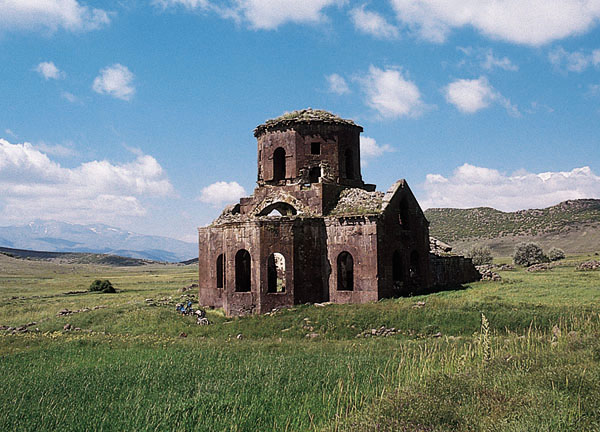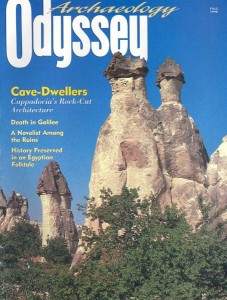Cappadocia: Epoch By Epoch
Sidebar to: The Cave-Dwellers

In these times, Cappadocia played a critical role in the development of Eastern Christianity. Numerous churches and settlements survive from this period, although none can be clearly associated with the formation of monasticism and few with recorded historical events. The masonry architecture is particularly striking. On the mountain Sivrihisar, near Güzelyurt, the elegant Red Church (K’z’lkilise) stands in an isolated mountain valley, its tall dome still intact (above). On Hasan
The evidence for rock-cut architecture and fresco painting is more limited in the early Christian period. In the Balkan Dere (Balkan Valley), two partially preserved carved spaces date to this early period. One of the rock-cut spaces contains a domed hall that preserves some finely carved architectural decoration, including modillions (a type of ornamentation on cornices), roundels with crosses, and a unique image of a palm tree. Nearby is a burial church, its floor lined with graves. The church’s walls and ceiling were decorated with painted geometric patterns on a white background, with standing figures depicted on its tiny dome.
Already a library member? Log in here.
Institution user? Log in with your IP address.

